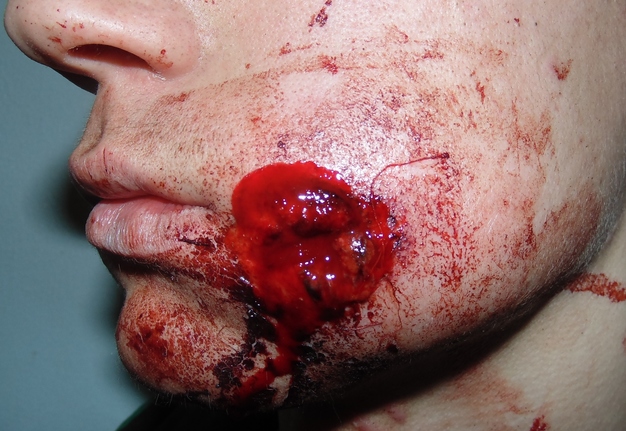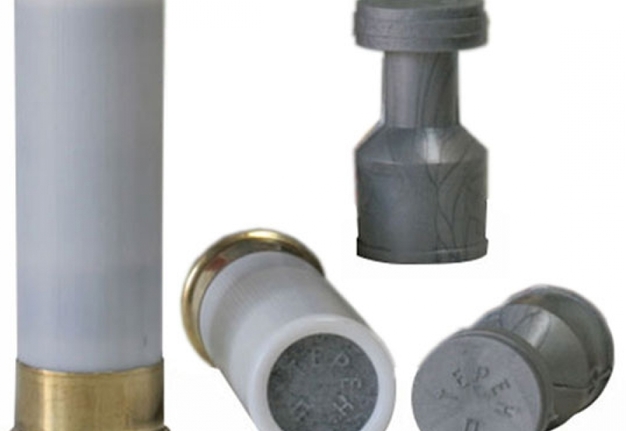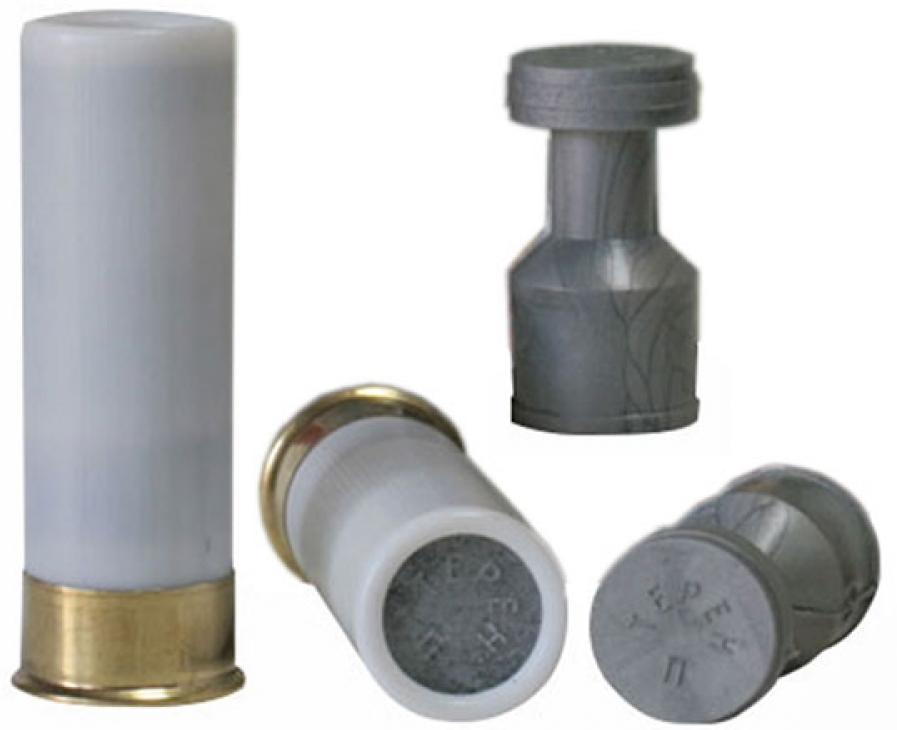April 29, 2022
https://doi.org/10.23999/j.dtomp.2022.4.4
J Diagn Treat Oral Maxillofac Pathol 2022;6:67–8.
Under a Creative Commons license
HOW TO CITE THIS ARTICLE
Fesenko II. Rubber bullet-induced wound of the cheek. J Diagn Treat Oral Maxillofac Pathol 2022;6(4):67–8.
NATIONAL REPOSITORY OF ACADEMIC TEXTS
https://nrat.ukrintei.ua/en/searchdoc/2022U000185/
INSTITUTIONAL REPOSITORY
https://ir.kmu.edu.ua/handle/123456789/618
ARTICLE
A 23-year-old male was directed to the Kyiv Regional Clinical Hospital on January 19, 2014 due to severe left cheek injury (Panel A). The patient arrived at ~09:40 p.m. conscious and with a gauze bandage on his left cheek soaked in blood. Oral mucosa was not damaged. Crowns of the teeth were uninjured. The margins of the wound looked lacerated but vital, without characteristic powder burn. A skin and subcutaneous tissue defect measured ~1.5 × 1.5 cm in size was noted. The initial wound debridement was performed under the local anesthesia. The depth of the wound reached ~0.5 cm with no evidence of wound canal. No foreign bodies were noted. Part of Syspur-Derm® (Paul Hartmann, Germany), a soft spongy bandage, was individualized and sutured for temporary closure of skin defect. The antibiotic was prescribed and after two weeks the patient directed to plastic surgeon. According to media reports dated January 19, 2014, the employees of the Ministry of Internal Affairs of Ukraine (i.e., militsia―the name of police in January 2014) have applied rubber bullets against protesters on Hrushevskoho Street, Kyiv in January 19, 2014.1 In that time, militsia were subordinated to Zakharchenko Minister of Internal Affairs and President Yanukovych, both had escaped to Russia due to the multiple shootings of protesters on Instytutska Street, Kyiv. The patient told the doctor that injury was obtained on Hrushevskoho Street approximately one hour before. Further investigations of journalists revealed that the incriminated weapon was Fort-500.3 Fort-500 is a series of 12/76 mm pump-action rifles manufactured by the Research and Production Company “Fort” of the Ministry of Internal Affairs of Ukraine.3 Panel B demonstrates the appearance of “Teren-12P” rubber bullets (in gray color) without and in the chambers (i.e., shells or cartridges) (in white color). Data showed that such bullets were used for the Fort-500 at January 19.2 Characteristics of the “Teren-12P” ammunition3:
-
Caliber: 12.
-
Length: 65 ± 1.8 mm.
-
Diameter: 21.97… 22.45 mm.
-
Bullet mass: 8.4 ± 0.5 g.
-
Bullet flight speed 3.5 m from the muzzle: 140 ± 20 m/s.
“Teren-12P” ammunition with an elastic bullet of shock-traumatic action are designed and manufactured for firing from smoothbore rifles of 12th caliber with a chamber length of 70 mm.3 Such weapon and bullets belong to less-lethal weapon4 and are used in protest cases by some national polices.5 ■ DTJournal.org
REFERENCES (5)
-
Rubber bullets were used against the protesters on Hrushevskoho Street – the media (in Ukrainian) [document on the internet]; 19 Jan 2014 [сited 04 Apr 2022]. Available from: Link
-
Fort-500 (in Ukrainian) [document on the internet]; 19 Jan 2014 [сited 04 Apr 2022]. Available from: Link
-
Traumatic cartridge Ecologist “Teren-12P” 12/70, elastic bullet (in Ukrainian) [document on the internet]; 04 Apr 2022 [сited 04 Apr 2022]. Available from: Link
-
Khonsari RH, Fleuridas G, Arzul L, Lefèvre F, Vincent C, Bertolus C. Severe facial rubber bullet injuries: less lethal but extremely harmful weapons. Injury 2010;41(1):73–6. Crossref
-
Lartizien R, Schouman T, Raux M, Debelmas A, Lanciaux-Lemoine S, Chauvin A, Toutee A, Touitou V, Bourges JL, Goudot P, Bertolus C, Foy JP. Yellow vests protests: facial injuries from rubber bullets. Lancet 2019;394(10197):469–70. Crossref



